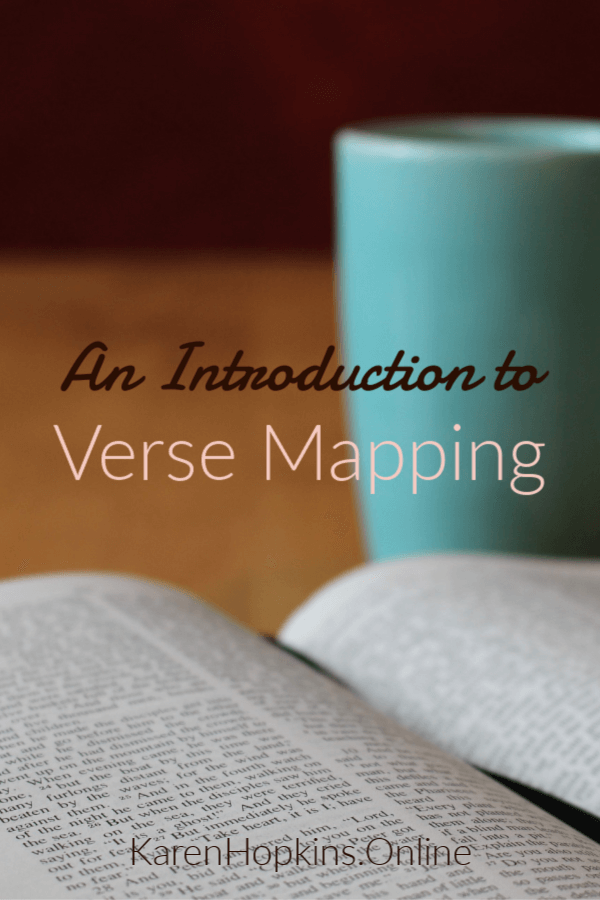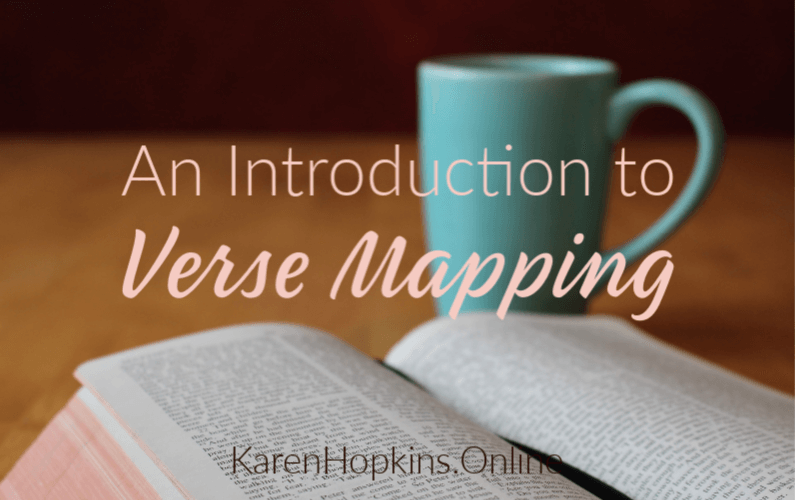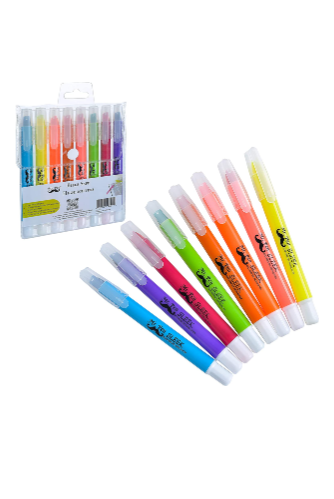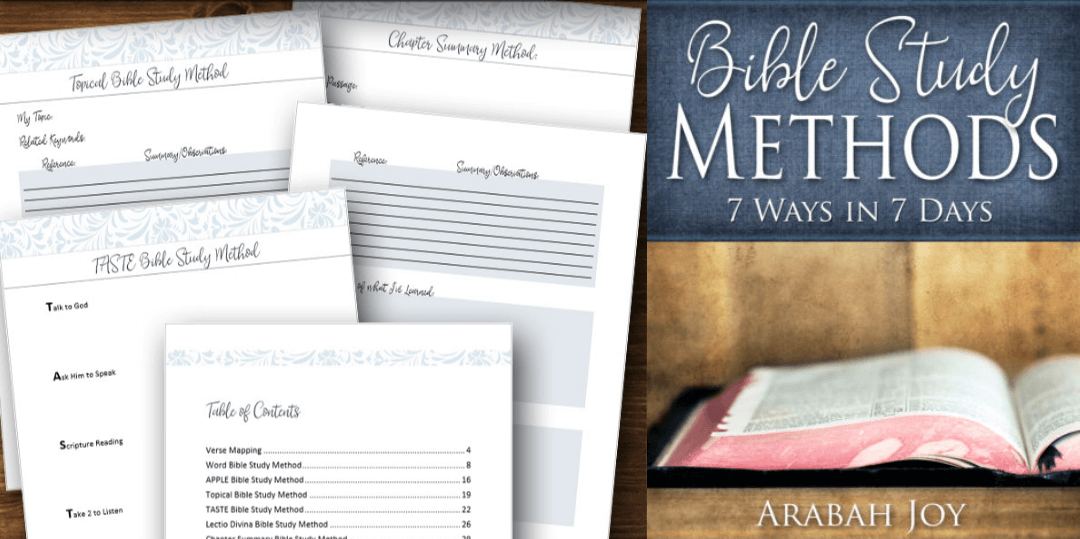Have you ever come across a Bible verse that you love and want to unpack word-by-word? Bible Verse Mapping is a creative and visual way to record your findings as you study words and concepts in a verse of Scripture. So, let’s dig deeper into the Verse Mapping Bible Study Method today!
What is Verse Mapping?
Bible verse mapping is simply taking a deeper look into a verse, or verses, of Scripture and mapping out your findings. You will look deeper into the words and context, write or illustrate your findings and then pray and reflect on any personal application you will make.
Verse Mapping Supplies
Before you begin verse mapping you need to gather your supplies:
- Bible – there are a variety of translations you can get in hard copy, kindle or online. Here I’ve chosen the NIV Women’s Study Bible.
- Concordance ( try websites biblegateway.com or blueletterbible.org or the Strong’s Concordance and Vine’s Dictionary)
- Bible Dictionary
- Notepad or Journal – DaySpring has a lovely selection of journals
- Pens – Check out these Mr Pen Bible Highlighters!
How to Verse Map
When you have gathered your supplies, the next thing you need to do is choose the verse or verses you want to map.
Here are my 8 steps for Bible Verse mapping for beginners:
Verse Mapping Step 1: Choose your verse
Today I’ve chosen Matthew 11:28-30
“Come to me, all you who are weary and burdened, and I will give you rest. Take my yoke upon you and learn from me, for I am gentle and humble in heart, and you will find rest for your souls. For my yoke is easy and my burden is light.”
I chose these verses because they are very familiar verses, but I have never really studied them. So, I thought this was a good opportunity!
You could choose a verse for a number of reasons:
- It is a favourite verse
- Someone gives you the verse and you want to look into it further
- It captures your attention during your Bible Study
- It puzzles you in some way so you want to look into it further.
Verse Mapping Step 2: Write or copy the verse
Write the verse out in your verse mapping journal, or on paper. You may want to do a draft version first. You may prefer to write it on your computer or iPad and make this a digital exercise.
Verse Mapping Step 3. Circle or highlight words or phrases you want to study
There is no right or wrong answer to this – just choose the words that stand out to you.
You can use a colour coding system to group your words. Use a dictionary, thesaurus and Greek/Hebrew dictionary to look up the meanings and synonyms for the words. Online dictionaries and bibles like blueletterbible.corg are great for this.
Related Posts: How to do a Word Study and How to study the Bible by topic
Verse Mapping Step 4: Look at the verse in other versions or parts of the Bible
Look up the verse in other Bible versions or translations and note any different wording in your Bible verse mapping journal. I did this by using thinner pens above the words in my verse.
Online Bibles like biblegateway.com and biblehub.com are great for this.
You can also look for different versions of your verse in other parts of the Bible. For example, if your verse is in one of the Gospels look for its related verse in the other gospels.
Verse Mapping Step 5: Use a concordance to look for related verses
If you have a study Bible it may have a column that suggests related verses or a concordance at the back where you can look up the words you circled and find other verses. Online Bibles are also great for looking up verses by searching for words.
Note down any verses that give you more insight about your chosen verse.
Verse Mapping Step 6: Look at the verse in its context
Now go back to your verse and read the surrounding verses. Read the whole chapter and consider the verse within its context.
Verse Mapping Step 7: Research the background to the verse
Then research the background into when and why the verse was written. Your study Bible, a commentary or online resources will help with this.
Areas to look into include:
- the author – who wrote it
- the intended audience – who were the first recipients
- when was it written – how does it ‘fit’ in the Bible story
- the purpose – why did the author write this book and this verse, was it meant as instruction, a warning or encouragement, for example.
- how is it written – is it written in the style of a story, psalm, prophecy, or letter.
Verse Mapping Step 8: Prayer and application
Prayerfully ask God what he is teaching you through this verse, and how you should apply it. Journal about it. Doodle, illustrate or decorate your journal or Bible if you wish.
Some ideas for Verse Mapping
Here are some verses you may want to choose from to get you started.
Jeremiah 29:11 “For I know the plans I have for you,” declares the Lord, “plans to prosper you and not to harm you, plans to give you hope and a future.”
Romans 8:28 And we know that in all things God works for the good of those who love him, who have been called according to his purpose.
Proverbs 3:5-6 Trust in the LORD with all your heart and lean not on your own understanding; in all your ways submit to him, and he will make your paths straight.
Galatians 5:22-23 But the fruit of the Spirit is love, joy, peace, forbearance, kindness, goodness, faithfulness, gentleness and self-control. Against such things there is no law.

















Trackbacks/Pingbacks